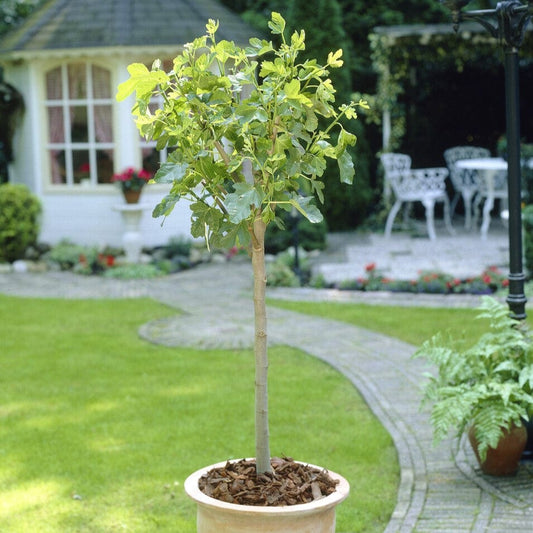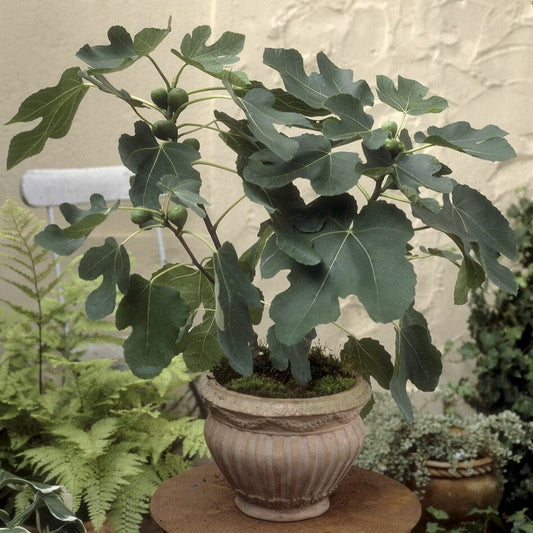Pruning Fig Trees: An Expert Guide
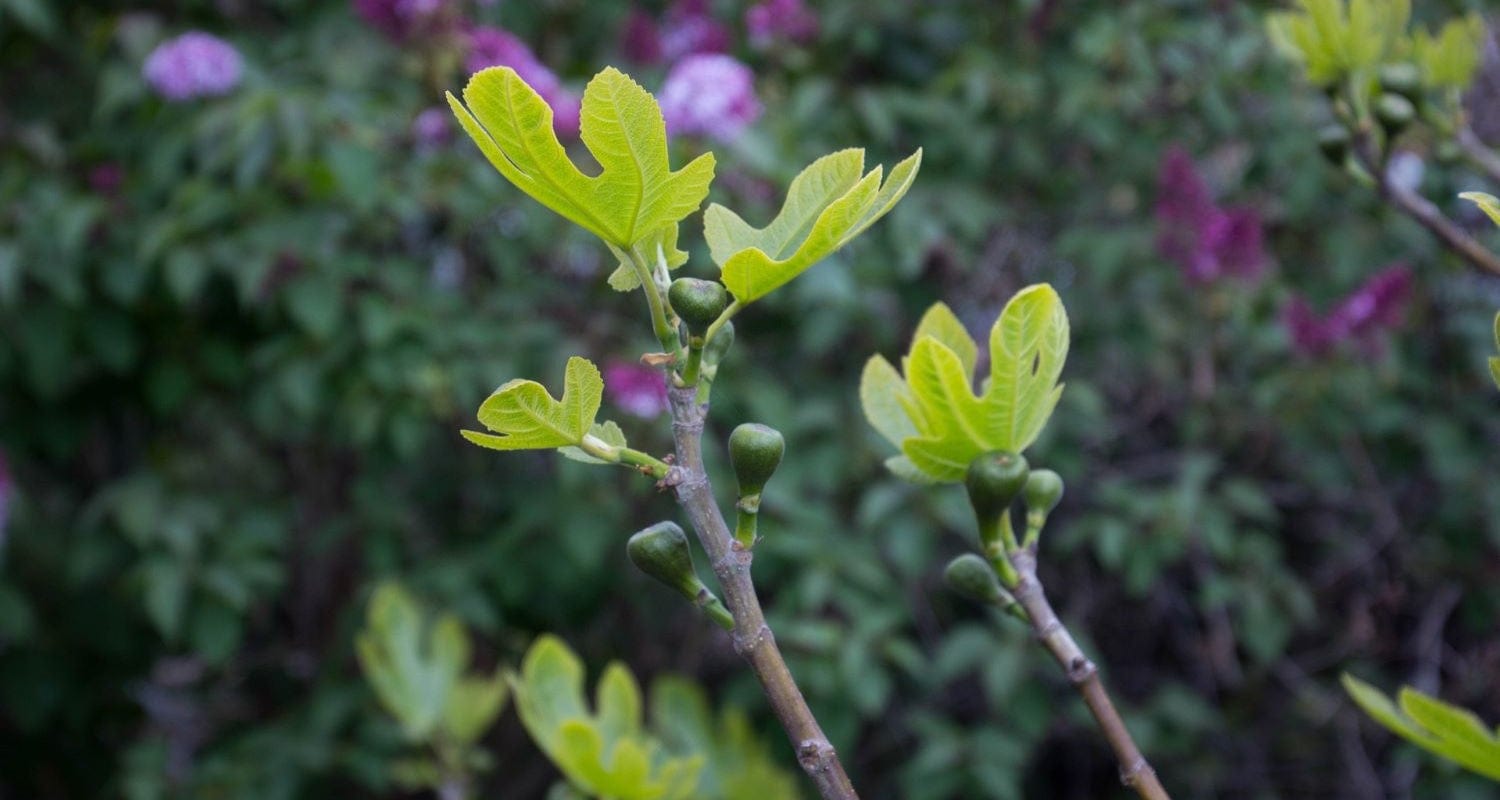
Do you have to prune your fig tree? Unless you have a particularly vigorous variety, the answer to that is not really! However, if you want to prune, it can help to maximise your fig crop, reduce the size of your tree or simply keep it nicely-shaped. It's important to do your fig tree pruning the right way. Here’s how.
Jump to:
- Why prune fig trees
- When to prune fig trees
- Tools for pruning fig trees
- Safety tips
- How to prune fig trees
- Fan training fig trees
- Pruning older fig trees
Why prune your fig tree?
In the wild (on an Italian mountainside, for instance) fig trees can grow to up to nine metres high at a steady rate of 30 cm per year. However, most of the varieties popularly grown in the UK are much more compact than this, with the favourite 'Brown Turkey' growing to a far more manageable three metres high by two metres wide.
It’s still a good idea to prune it, though. As well as keeping it well-shaped, you’ll encourage new branches to grow and stimulate the production of fruit. If left to its own devices, the tree will put more energy into leafy growth, rather than producing good-quality figs. Pruning also allows you to check your tree’s health and act on any damage or disease you find by trimming out the affected parts before they become a problem.
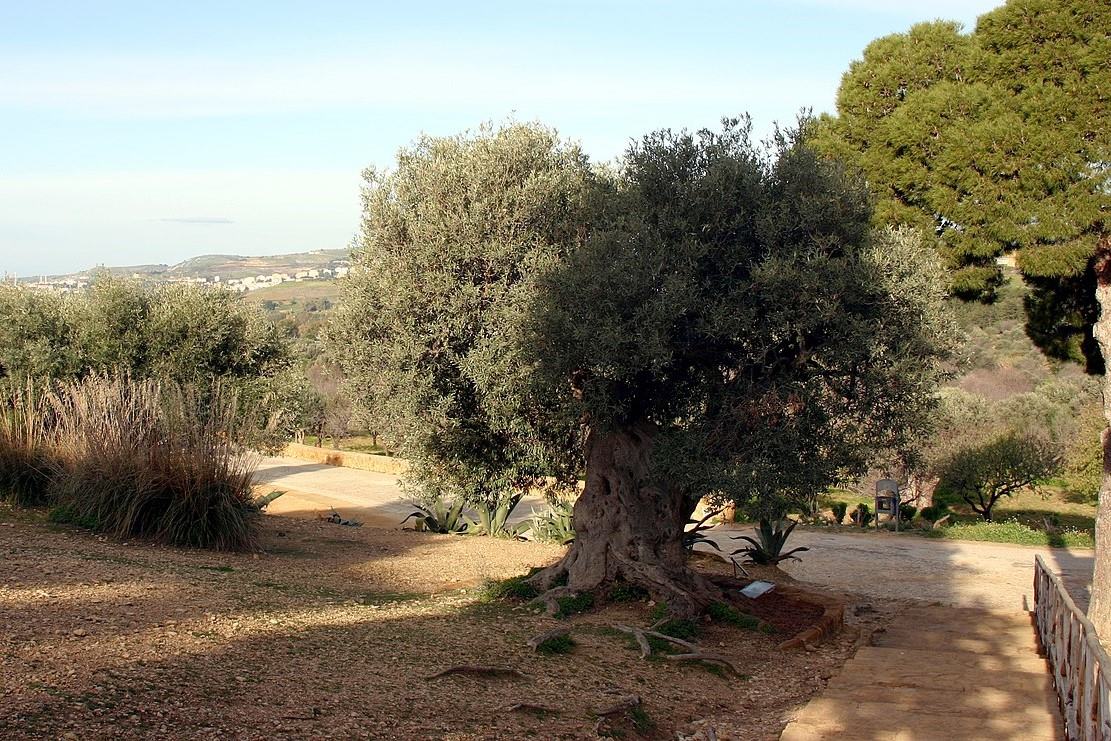
Image source: Wikimedia.
When should you trim fig trees?
The main time to prune figs is in summer, when you can trim them lightly into shape. You should also give them a quick tidy up in winter, to remove any dead, diseased or crossing branches. Fig trees are one of those species that bleed a lot of sap. This can mean infections getting into the cuts, weakening the tree or even killing it. To avoid this, they should never be pruned in spring, when the level of sap is at its highest.
What tools do you need to prune fig trees?
You’ll need a pair of sharp secateurs and for taller trees, some loppers or long handled pruners. If your fig tree is larger or more mature, you may need a pruning saw for the thicker branches. It’s very important for all your equipment to be cleaned between trees, to prevent the spread of disease. You can do this with a clean cloth dipped in disinfectant or rubbing alcohol.
Safety steps for fig pruning
Fig tree sap can irritate your skin, so make sure to wear gardening gloves or gauntlets. If you start at the bottom of the tree and work your way up, there’ll be less chance of sap dripping on you.
How do you prune fig trees?
Most fig trees in the UK are grown in pots as standards or half standards (a tall clear stem with a crown of branches on top). Figs are usually trained as free-standing small bushes, with a short trunk topped with a crown of branches, or as standards, with a taller, clear stem. They can also be grown as multi-stemmed shrubs branching from the base. The method below is the same for both of these types of fig.
How to carry out winter fig pruning
The best time to prune your fig is when the tree is dormant, between November and March; our experts do the job in February, on a dry day with no frost.
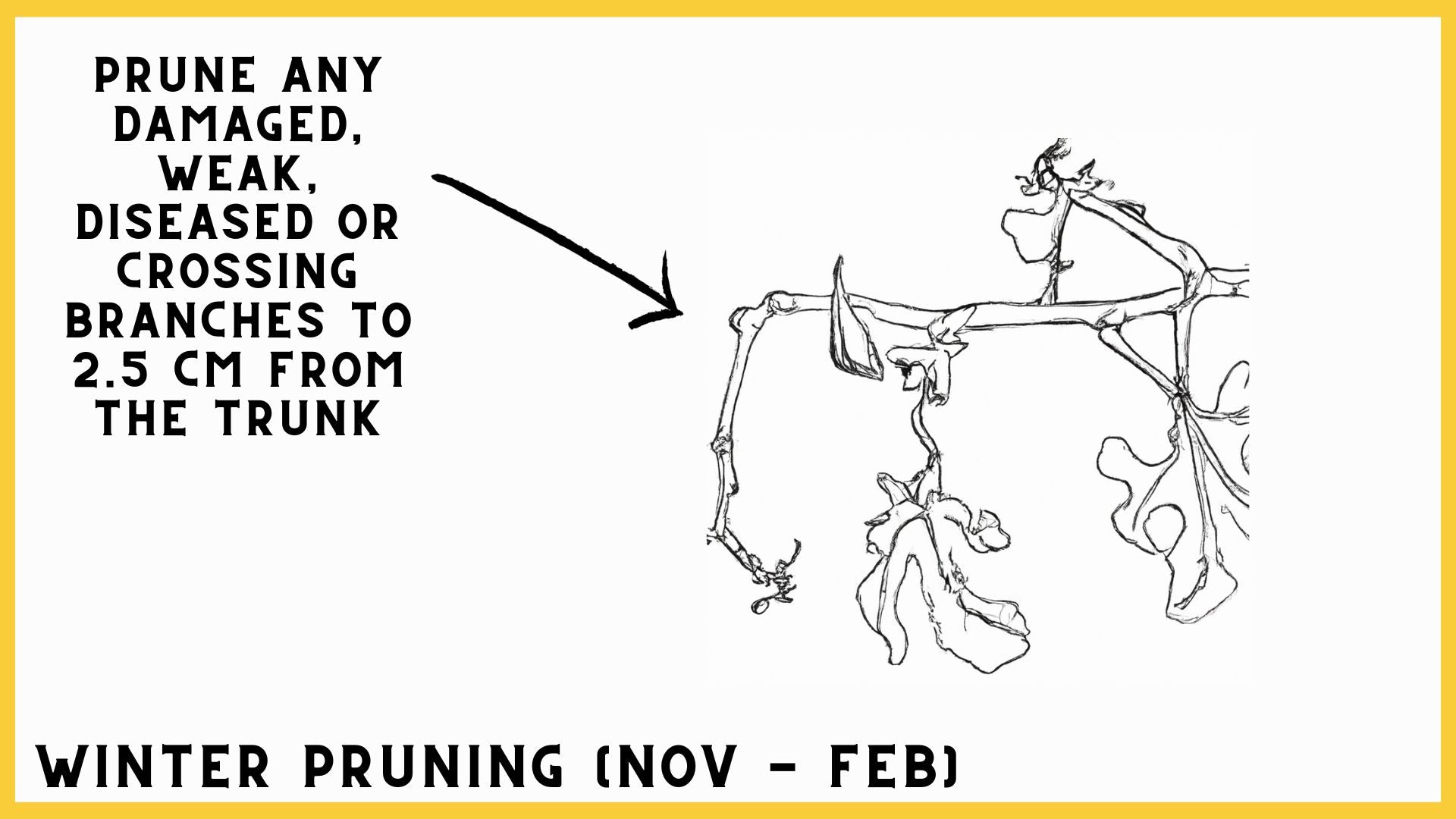
What you’re looking to do here is get rid of any damaged, weak, diseased or crossing branches, to create a nice open, airy framework for your tree. Prune these branches down to about 2.5cm from the trunk to encourage healthy new ones to grow, and try to avoid removing any stems with fruitlets (tiny figs!) at the ends. Crowded branches can be removed completely, as you don’t want those coming back.
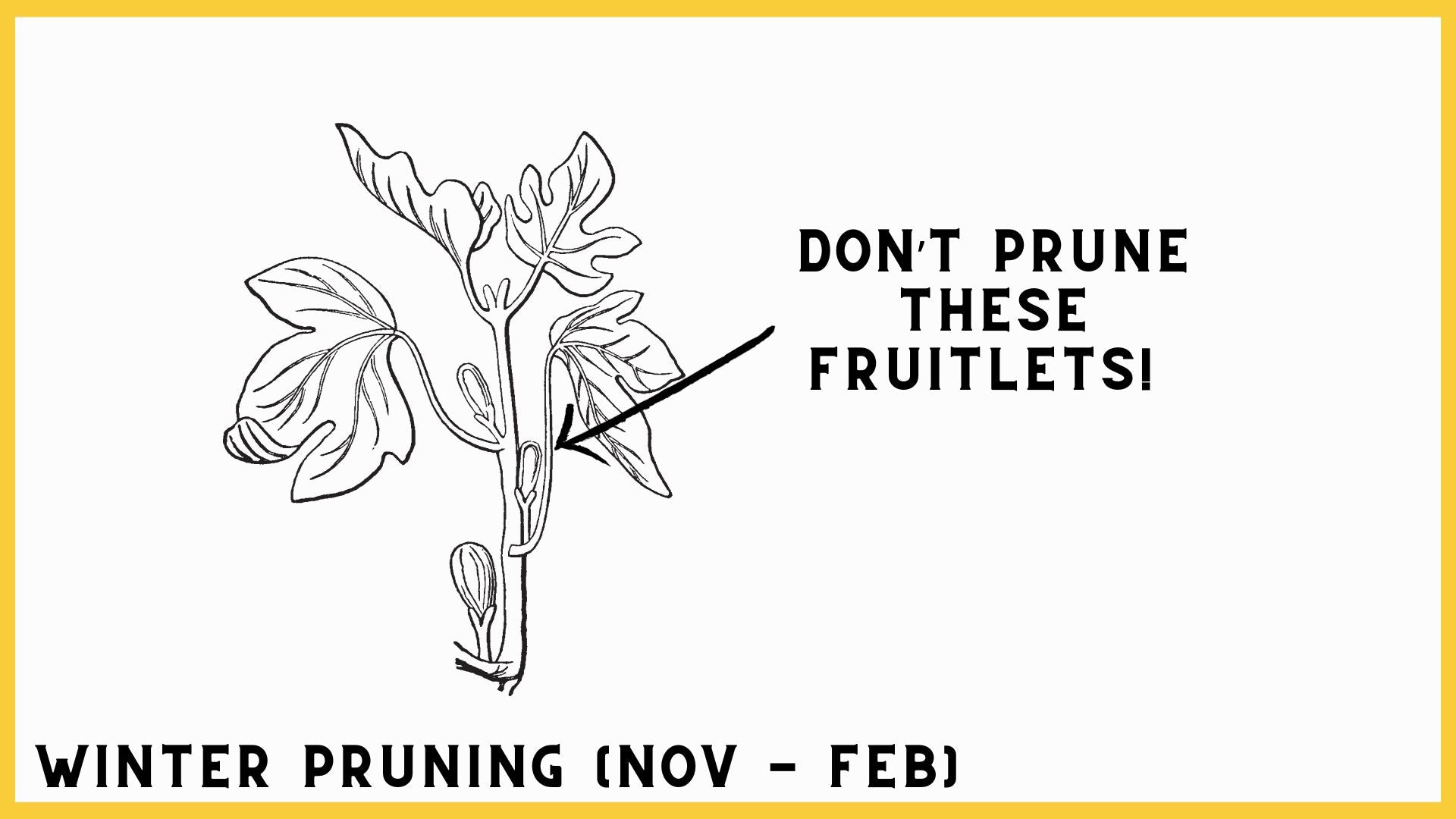
How to carry out summer fig pruning
June is the best time for your summer pruning, leaving plenty of time for the tree to form the following year’s fruits before the weather gets too cold. To prune in summer, trim back the new shoots to five or six leaves long. What you’re doing here is opening up the crown of the tree to let plenty of sun and air through, as well as encouraging the tree to branch evenly and devote its energy to growing those all important fruits.
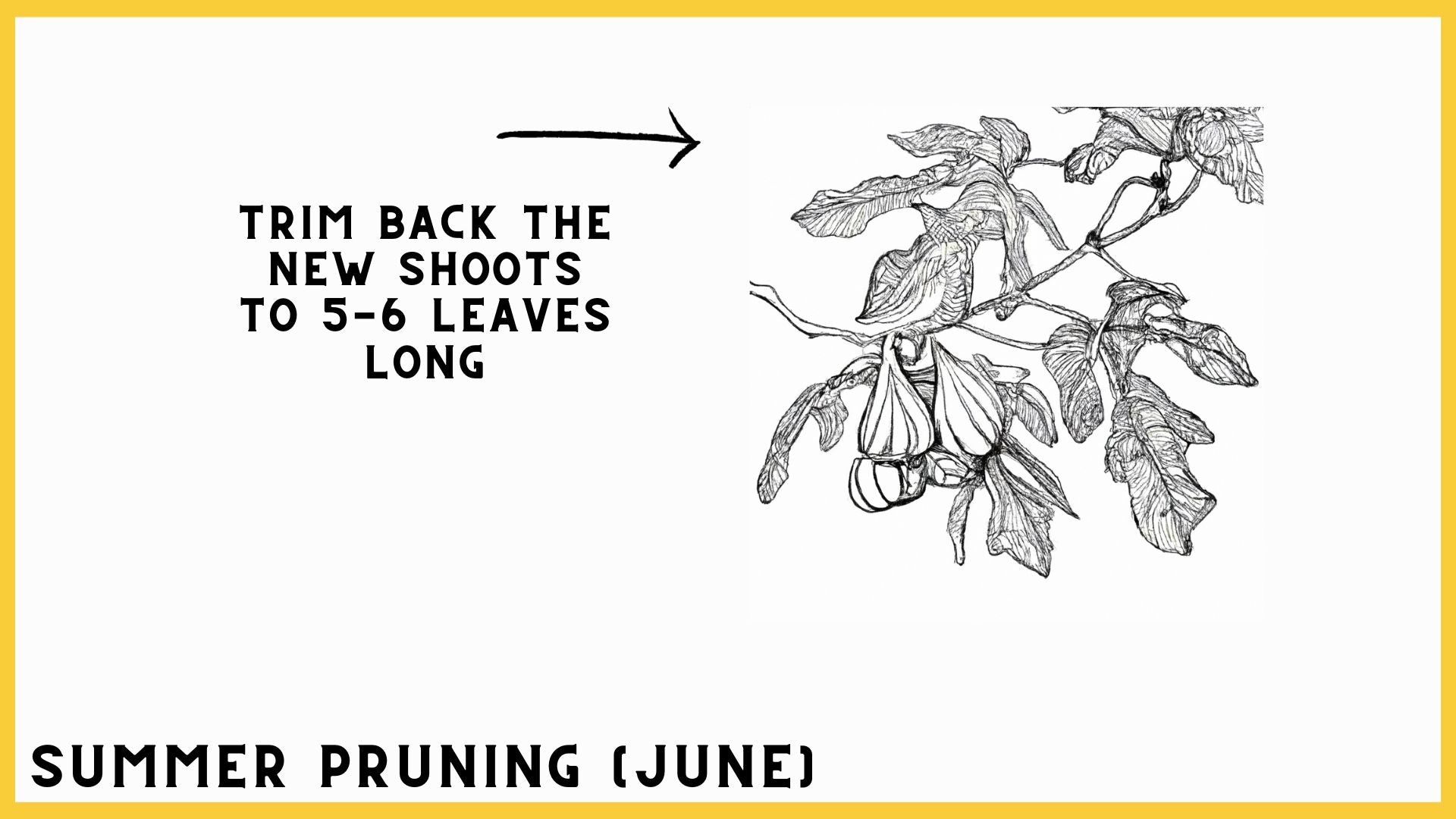
You should also remove any large figs that haven’t ripened by mid-autumn; they won’t do it this late in the season. The tiny, pea-shaped fruitlets at the tips of the branches are the ones you want to keep, as these are the beginning of next year’s crop.
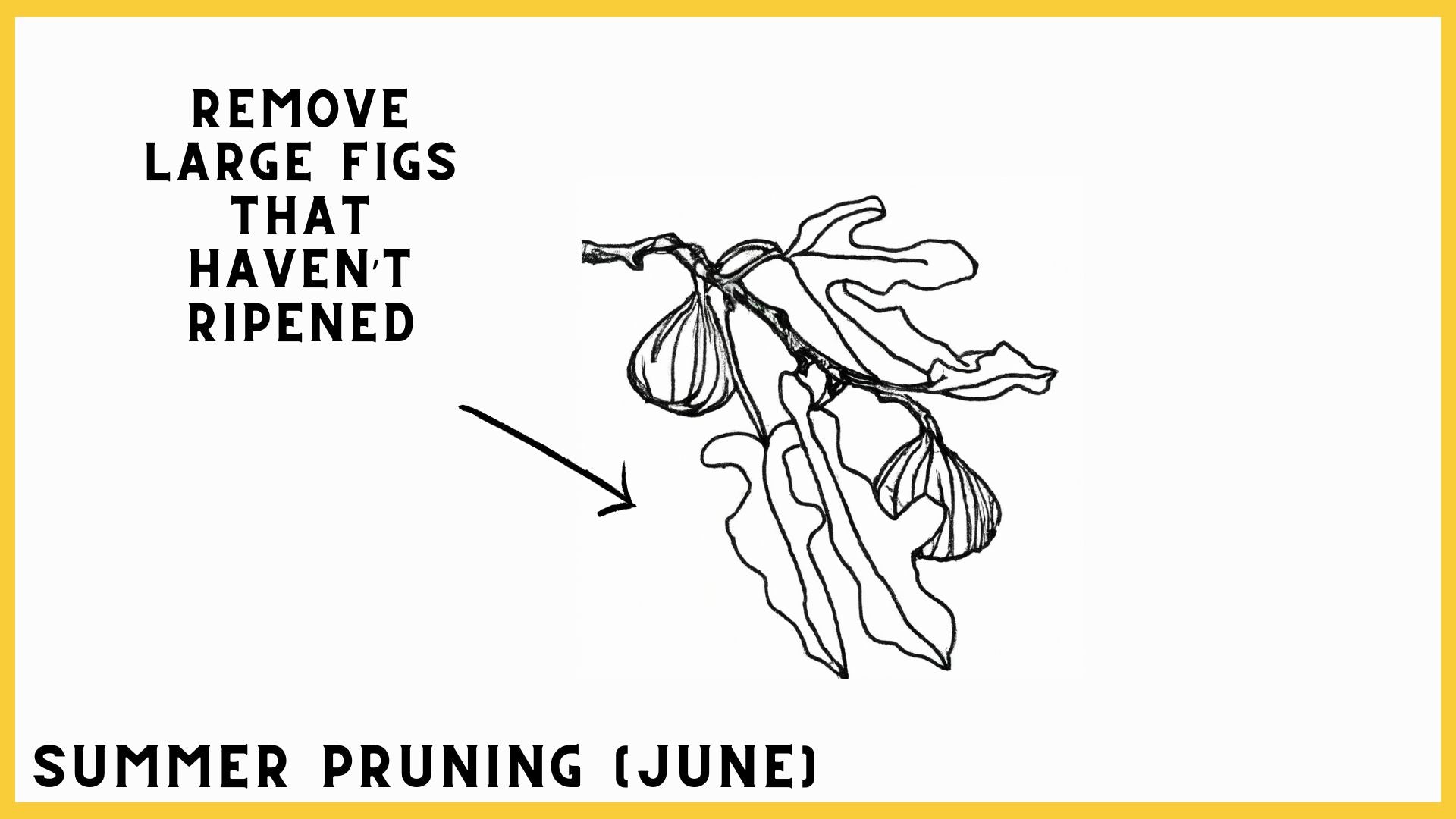
Fan training your fig tree
Fig trees work really well as fans; this means training them against a wall with a support network of wires in a flattened fan shape. This saves space in your garden as well as improving the tree’s health by allowing more air and light to the branches, as well as space for larger fruit to develop. Find out how to do this with our comprehensive step-by-step fan training guide.
How do you prune older fig trees?
If your tree is older or very overgrown, you can prune it back harder, but be aware that you might not get much of a fruit crop the following year. Prune back the branches that have grown too long to about five to eight centimetres to encourage healthy new growth; any crossing or overcrowded branches in the centre can be removed completely.

For more expert fig tree advice, check out our fig tree growing guide.
Last updated: 27/10/2025











